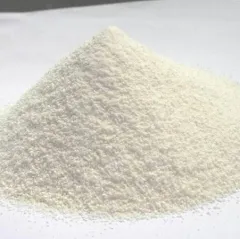Overview of stearic acid series:
Stearic acid, namely octadecanoic acid, has the structural formula: CH3(CH2)16COOH, which is produced by the hydrolysis of oil and is mainly used for the production of stearic acid esters. Each gram was dissolved in 21ml ethanol, 5ml benzene, 2ml chloroform or 6ml carbon tetrachloride.
Zinc stearate is a white fine powder, smooth to the touch, without the feeling of sand, and has a fatty smell.
Magnesium stearate is a fine, light white powder in appearance, insoluble in water, ethanol and ether, soluble in hot water and hot ethanol.
The appearance of lithium stearate is white fine powder, which is more soluble in ketones than other lithium stearates.
Application of stearic acid:
Stearic acid is widely used in the manufacture of cosmetics, plastic cold-resistant plasticizers, release agents, stabilizers, surfactants, rubber vulcanization accelerators, waterproofing agents, polishing agents, metal soaps, metal mineral flotation agents, softeners, Pharmaceuticals and other organic chemicals.
Zinc stearate is used in the processing of non-toxic PVC products, which can effectively improve the light stability of PVC products.
Magnesium stearate is used in food, medicine, paint, plastic, rubber, textile and other industries.
Lithium stearate can be used in combination with phosphatidic acid plasticizers and as an external lubricant for nylon, phenolic resin and rigid PVC. In addition, lithium stearate can be used as waterproof and anti-seepage in construction.

Stearic acid series suppliers:
We supply different kinds of Stearic Acid, such as Zinc Stearate, Magnesium Stearate, Lithium Stearate, Calcium Stearate, Lead Stearate, Aluminum Stearate, Cadmium Stearate, etc. Email us or click the desired product to send an inquiry.
Payment Term:
T/T, Credit Card, Western Union, Paypal etc.
Term for delivery:
By air, courier or by sea according to the needs of the customer.
Conditions of storage:
1.) Maintain a dry area at the temperature of room.
2.) Avoid high and damp temperatures.
3.) Utilize immediately following the opening of the bag inside.

FAQ:
Q1:
What is stearic acid?
Re: Stearic acid is an organic compound, also known as octadecanoic acid, with the formula C18H36O2. It is a white or slightly yellowish amorphous powder with a waxy appearance, soluble in hot ethanol, benzene, chloroform, ether, and other organic solvents, but not soluble in water. Stearic acid is widely used in industry. It is the raw material for the production of stearate, these salts such as sodium stearate, calcium stearate, magnesium stearate, and so on, are widely used in cosmetics, plastics, rubber, paint, coatings, ink, food, medicine, and other industrial sectors. In cosmetics, stearic acid can act as an emulsifier, working with other ingredients to form a stable white paste. In addition, stearic acid can also be used in the manufacture of soap, grease, waxed paper polish, and stearic acid glycerin emulsifiers.
Q2:
What are the uses of stearic acid?
Re:Industrial use: Stearic acid is used in industry as a plasticizer, stabilizer, surfactant, rubber vulcanization accelerator, water repellent, polish, metal soap, metal mineral flotation agent, softener, pharmaceutical, and other organic chemicals. In addition, stearic acid can also be used as a solvent for oil soluble pigments, crayon smoothing agent, waxed paper polishing agent, emulsifier of stearic acid glycerin, etc. In the plastics industry, stearic acid is an essential raw material in the manufacture of PVC plastic pipes, plates, profiles, and films. It can be used as a heat stabilizer of PVC, with good lubricity and good light and heat stability.
Food use: Stearic acid is also used as a food additive, such as chocolate, candy, cookies, cream, etc., as a preservative and stabilizer. In these foods, stearic acid can increase the shelf life of food and prevent food spoilage and spoilage.
Cosmetic uses: Stearic acid has essential applications in the cosmetic industry, often used as an emulsifier, thickener, and lubricant. In cosmetics, stearic acid can help mix water and oil to form a stable paste or lotion while also increasing the texture and smoothness of the product, making the skin feel more silky and moisturized.
Q3:
What substance is it?
Re:Stearic acid is an organic compound, also known as octadecanoic acid, with the formula C18H36O2. It is a white or slightly yellowish amorphous powder with a waxy appearance, soluble in hot ethanol, benzene, chloroform, ether, and other organic solvents, but not soluble in water. Stearic acid is widely present in nature; almost all oils have varying levels of stearic acid, and the content of stearic acid is higher in animal fats, such as the content of butter can reach 24%, the content of vegetable oil is less, the content of camellia oil is 0.8%, and the content of palm oil is 6%. In addition, the stearic acid content of cocoa butter is also high, reaching 34%.
Q4:
Which cosmetics use stearic acid?
Re:Paste cosmetics: Stearic acid is often used as an emulsifier to help mix water and oil
to create a stable and delicate paste. Therefore, many pasted cosmetics, such as creams, body lotions, hair conditioners, etc., may contain stearic acid.
Makeup products: Stearic acid is also widely used in makeup products, such as foundation, eyeshadow, blush, etc. It can add texture and durability to the product, making the makeup more natural and long-lasting.
Skin care products: Stearic acid acts as a moisturizer, helping the skin retain moisture and softness. Therefore, many skin care products, such as masks, serums, creams, etc., may contain stearic acid.
Soaps and detergents: Stearic acid is also used to make soaps and detergents. It can increase the foam and stability of the product so that the washing effect is better.
Q5:
What is the molecular formula for stearic acid?
Re:The molecular formula for stearic acid is C18H36O2. This compound, also known as octadecanoic acid, is a white or yellowish waxy solid that is greasy and insoluble in water but soluble in most organic solvents. Stearic acid has a wide range of industrial applications, mainly used in the production of stearate. Still, it also can be used as a plasticizer, stabilizer, surfactant, rubber vulcanization accelerator, water repellent, polish, metal soap, metal mineral flotation agent, softener, pharmaceutical, and other organic chemicals.

